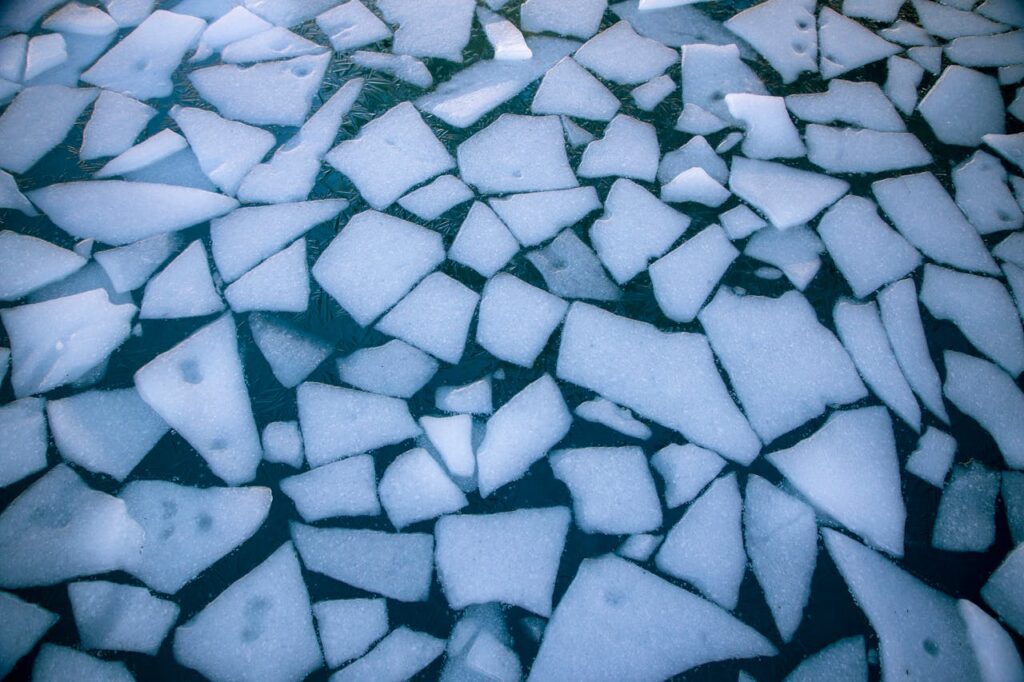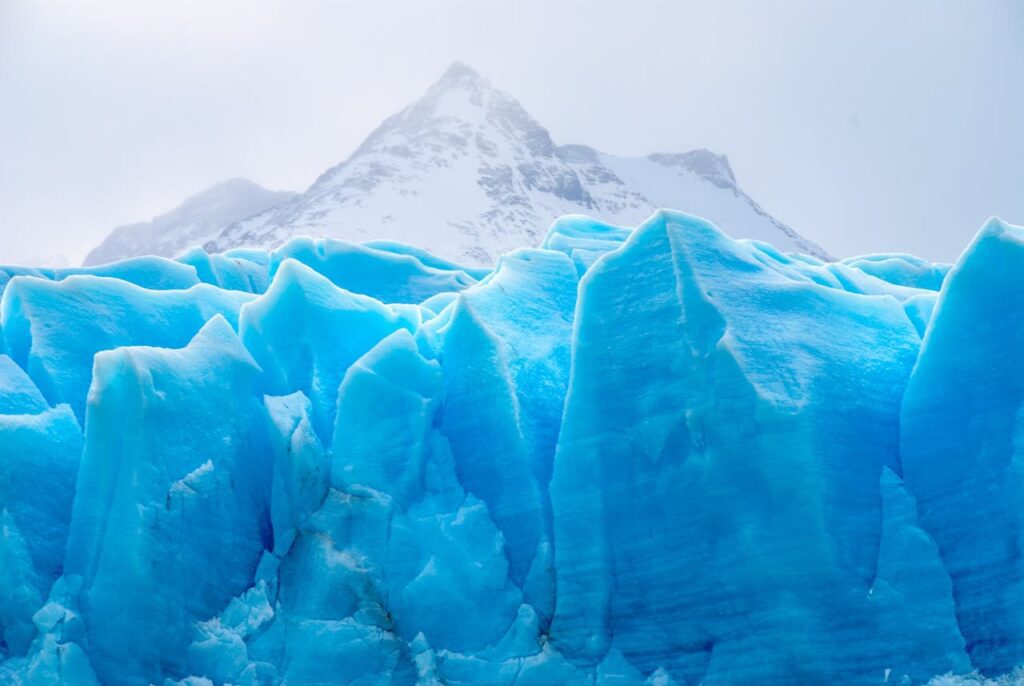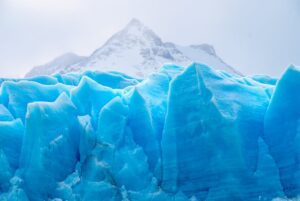17 Fun Facts About Ice: A Cool Exploration
Ice, in its many forms, from majestic glaciers to the humble ice cube in your drink, harbors an array of fascinating properties and historical tidbits. Below, we delve into 17 fun facts about ice, shedding light on this frozen marvel that plays a crucial role in our natural world and daily lives.

- Ice is Less Dense than Water: One of the most remarkable facts about ice is its density. Ice floats in water because it is about 9% less dense than liquid water, a unique property among substances, allowing aquatic life to survive under frozen surfaces during winter.
- Glaciers Store Most of Earth’s Freshwater: Glaciers, vast and ancient rivers of ice, hold approximately 69% of the world’s freshwater. This staggering fact about ice highlights its importance in global water reserves and its impact on sea levels and ecosystems.
- The Ice Age: Earth has experienced several ice ages, with the last major one ending about 10,000 years ago. These periods were characterized by significant expansions of ice sheets and glaciers, profoundly shaping the planet’s surface and influencing the evolution of life.
- Snowflakes’ Unique Design: No two snowflakes are exactly alike. Each snowflake forms a unique pattern due to the varying conditions of temperature and humidity it encounters as it falls, creating an infinite array of designs—a delightful fact about ice crystals.
- Ice Can Trap Methane: Ice can trap methane gas, forming a compound known as methane hydrate. These ice-like structures, found under the ocean floor and permafrost, contain large amounts of methane, a potent greenhouse gas, highlighting the complex role of ice in climate dynamics.
- The Fastest Glacier: Greenland’s Jakobshavn Glacier is one of the fastest-moving glaciers, traveling up to 40 meters per day. This fact about ice demonstrates the dynamic nature of glacial movements and their significant contributions to sea-level rise.
- Ice on Other Planets: Ice isn’t just an Earthly phenomenon. Water ice has been found on Mars, the moons of Jupiter and Saturn, and even on distant comets, suggesting that the building blocks of life might be more common in the universe than previously thought.
- Iceberg Freshwater Reserves: Icebergs, often calved from glaciers, are floating freshwater reserves. An intriguing fact about ice is that a single large iceberg can contain more than 20 billion gallons of water, enough to supply a million people for five years.

Fun Facts About Ice Continued:
- The Ice Hotel: Sweden boasts the world’s first ice hotel, constructed entirely out of ice and snow. This architectural marvel is rebuilt every year and offers guests a chilly but magical stay, showcasing the versatility and beauty of ice as a building material.
- Ice Volcanoes: Not all volcanoes spew lava; some, found on icy moons like Enceladus (of Saturn), erupt with water and ice, a phenomenon that fascinates scientists and underscores the diverse geological processes that shape our solar system.
- The Mpemba Effect: This peculiar fact about ice involves hot water freezing faster than cold water under certain conditions, known as the Mpemba effect. The phenomenon has puzzled scientists for centuries, highlighting the complex physics of water and freezing.
- Ice Circles: Natural phenomena create ice circles in slow-moving water in cold climates. These rare formations, often several meters in diameter, form due to a vortex under the surface and present a mesmerizing spectacle of nature’s artistry.
- Ice as a Record Keeper: Ice cores, extracted from glaciers and ice sheets, act as time capsules. By analyzing the layers of ice, scientists can uncover invaluable information about past climates, volcanic eruptions, and even the composition of the ancient atmosphere.
- The Largest Iceberg: Recorded in 2000, the largest iceberg ever measured broke off from Antarctica’s Ross Ice Shelf. Spanning an area of 11,000 square kilometers, this massive block of ice was larger than the island of Jamaica, highlighting the sheer scale at which ice can exist.
- Subglacial Lakes: Lakes can exist beneath glaciers, insulated by the ice above. These subglacial lakes, like Antarctica’s Lake Vostok, are isolated ecosystems that may harbor unique life forms, offering clues to life’s adaptability in extreme conditions.
- The Healing Properties of Ice: Beyond its physical wonders, ice has therapeutic uses. The practice of cryotherapy, using extreme cold for pain relief and to reduce inflammation, showcases ice’s benefits in medicine and wellness.
- Ice in Cuisine: Ice plays a crucial role in cuisine, not just for cooling drinks, but in the preparation of dishes like ice cream and sorbets. The culinary applications of ice, combining science and artistry, enhance flavors and textures, making our gastronomic experiences more delightful.
These facts about ice offer just a glimpse into the complexity and significance of this frozen substance. From shaping our planet’s geography to holding keys to understanding climate change and even the potential for life on other planets, the facts about ice continue to fascinate and inspire curiosity. Whether as vast glaciers or the simple ice cube in your beverage, ice touches our lives in myriad, often overlooked ways, embodying the profound interconnections between the natural world and human civilization.

Frequently Asked Questions About Ice
What is ice? Ice is the solid state of water, formed when it freezes at or below 0°C (32°F). It’s a natural substance that can appear in various forms, such as snowflakes, hail, frost, glaciers, and icebergs, depending on the conditions under which it forms.
Why does ice float in water? Ice floats in water because it is less dense than liquid water. When water freezes, it expands and forms a crystalline structure that occupies more space than when it is in its liquid form, making the ice less dense than water.
Can ice exist in forms other than solid? Yes, ice can exist in several different crystalline forms known as polymorphs, depending on the temperature and pressure conditions. However, the ice we commonly encounter is Ice Ih, which is the hexagonal crystalline form of ice that forms at Earth’s surface conditions.
What causes the unique patterns in snowflakes? The unique patterns in snowflakes are caused by the intricate conditions of temperature and humidity through which a snowflake falls as it forms in the atmosphere. These conditions affect the crystal structure as it grows, resulting in the unique, symmetrical patterns of a snowflake.
How do glaciers form? Glaciers form through the accumulation and compaction of snow over many years. As new layers of snow fall, they compress the layers beneath them, turning into firn (a dense, granular ice) and eventually forming solid ice. This process can take decades or even centuries.
What is the difference between sea ice and icebergs? Sea ice forms when ocean water freezes, and it remains floating on the surface of the sea. Icebergs, on the other hand, originate from the calving of glaciers or ice shelves and consist of freshwater ice. Icebergs float in saltwater oceans or seas after breaking off from their parent ice mass.
Why is melting ice a concern for global warming? Melting ice is a major concern for global warming because it contributes to rising sea levels and the loss of habitat for polar species. As ice melts, especially from glaciers and ice sheets, it adds freshwater to the ocean, raising sea levels and potentially leading to coastal erosion and habitat loss.
What is the Mpemba effect? The Mpemba effect is a phenomenon where hot water can freeze faster than cold water under certain conditions. The exact reasons for this effect are still a subject of research and debate, involving factors such as evaporation, convection, and the properties of water molecules.
Can ice be used as a renewable energy source? While ice itself is not a source of energy, it plays a role in renewable energy systems. For example, ice storage air conditioning uses ice made during off-peak hours for cooling during peak demand times, reducing energy use and strain on the grid.
How is ice used in medical treatments? Ice is commonly used in medical treatments for its anti-inflammatory and analgesic (pain-relieving) properties. Applying ice to injuries can reduce swelling, numb pain, and decrease muscle spasms. It’s a simple, effective treatment for sprains, strains, and bruises.
Are all icebergs white? Not all icebergs are white. Some icebergs can appear blue, green, or even striped with layers of dirt and rock. The color variations are due to the presence of air bubbles, impurities, or the way light reflects off and passes through the ice.
How old can ice be? Ice can be incredibly old, especially in the case of glacier ice or ice caps. The oldest ice cores drilled from Antarctica and Greenland contain ice that is over 800,000 years old, providing valuable information about Earth’s past climate.
What are ice circles and how do they form? Ice circles are rare natural phenomena that occur in slow-moving water in cold climates. They form when a piece of ice breaks off and begins to spin due to the water current, gradually shaping into a near-perfect circle by the surrounding ice and water.











